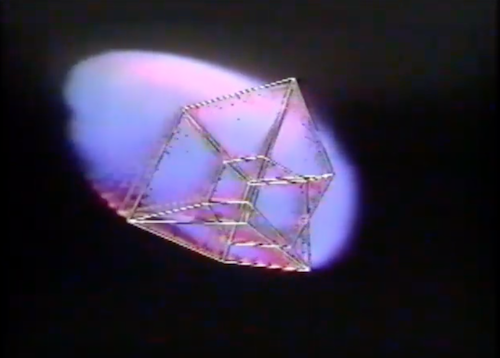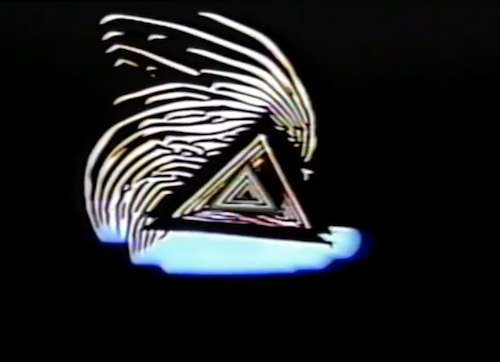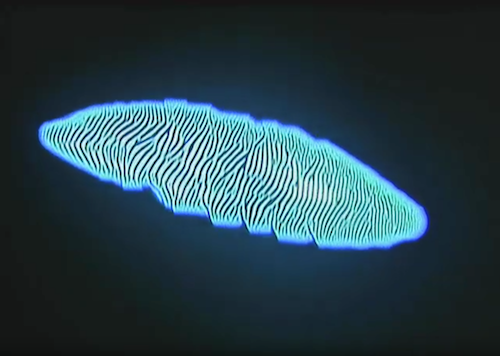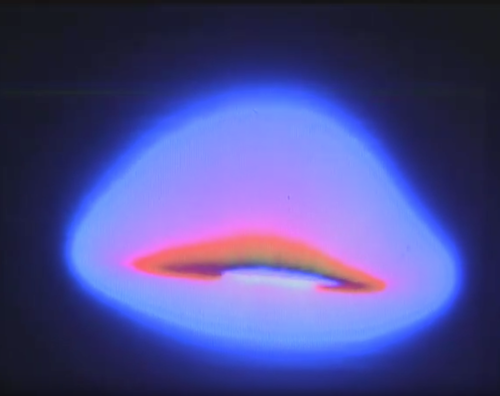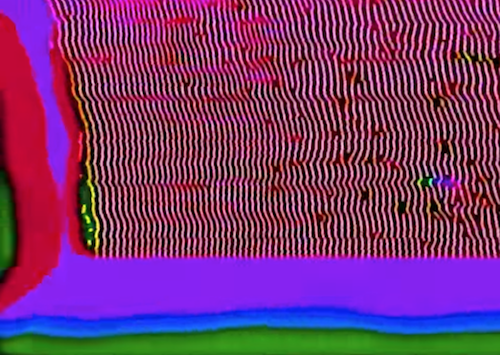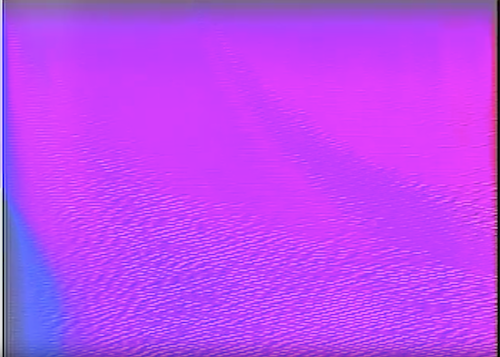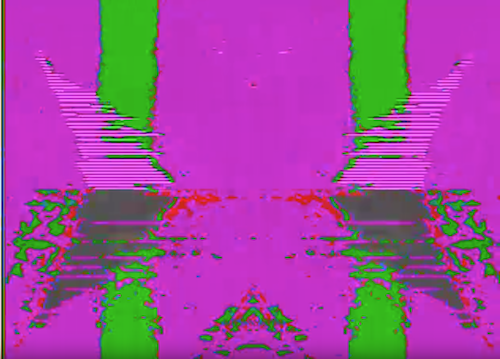What is Video Feedback Synthesis and How do I get started?
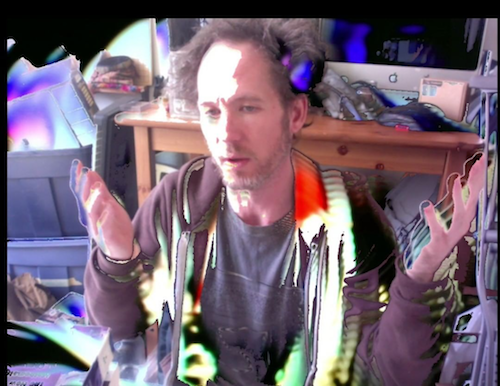
Video feedback synthesis is a form of video synthesis where the main generative source of video activity is generated by some sort of iterative nonlinear process. At the end of this text there will be more information on the mathematics of this process but the main goal here is to provide just enough information for someone new to this form of expression to get started. There are two main techniques for video feedback synthesis: camera and screen feedback, and internal feedback.
1. Camera and screen feedback
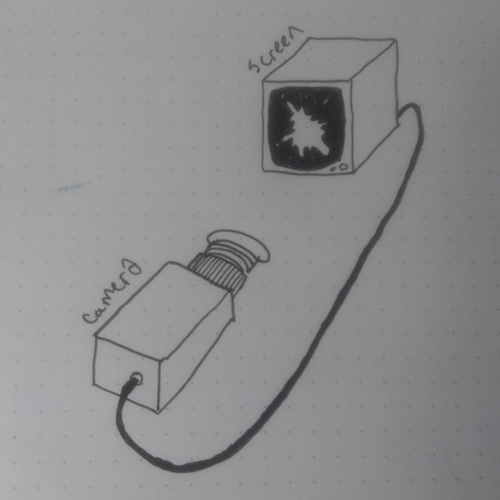
All you need at a basic level is a video camera and some way to run the live signal out from the camera into a screen. The most common types of analog screens one can work with are CRTs and the most common types of digital screens are LCDs. The most common types of analog cameras and digital cameras usually use the same basic ccd or cmos chips to convert light into signals.
A. Analog camera and analog screen This combination results in the lowest latency between camera and screen. That combined with the warm fuzziness of the phosphor pixels on the CRTs tends to result in throbbing glowing orb shapes. This feedback is more immediately responsive to changes in the camera position, focus, and exposure so there is potential for strobing artefacts that can be alleviated by control of focus and exposure on the camera and/or controlling the brightness and contrast on the screen. Adding some number of mixers and digital processing fx in between signal chain from the camera to the screen will add some small amounts of delay between the camera and screen.
B. Analog camera and digital screen This combination is where you start to get more detailed reaction diffusion lines appearing in the feedback. The digital screen adds a bit of delay to the feedback process and the sharper resolution means defined lines have more potential to develop. Some digital screens offer the option to upscale SD inputs to various forms of HD which can accentuate moire style artefacts. I have only really played around with smaller tabletop sized LCD screens (between like the 5 inch and 19inch kinds) and not much with the full size wall mounted ones. I have not tried feedback with an LED, OLED, or plasma screen yet but they seem fruitful for explorations
C. Digital camera and digital screen
This is where a lot more options come in to play. If there are enough controls on your camera and screen and you are not using any sort of SD video mixers in your loop then you can experiment with different resolutions, aspect ratios, shutter speeds, frame rates and more. Depending on the camera you may also be able to capture directly while filming (for example if you have a DV camera that may not be as useful for capturing as something that saves onto an SD card).
D. Digital camera and analog screenThere are some difficulties in getting this to work properly but can be quite delightful when it does. Synchronizing your cameras fps and shutter speed to match the CRT (fps 30 shutter speed 1/30 for NTSC signals, fps 50 shutter speed 1/25 for PAL signals) is crucial to avoid artefacts.
What kind of camera/Screens should i get?
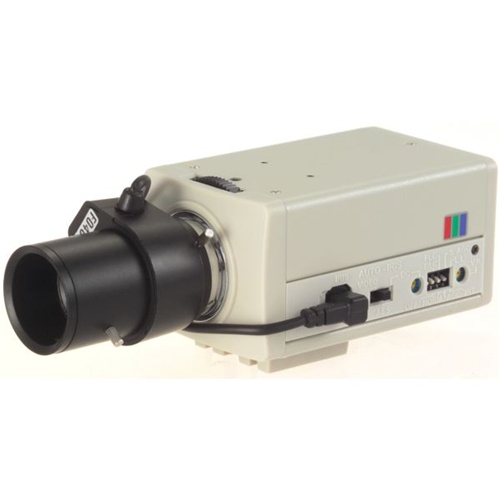
Really anything will work! For buying used cameras it is important to make sure that there is a power supply available and some way to get live video out? Consumer grade camcorders often have no available chargeable batteries and some sort of proprietary power supply as well as some sort of proprietary breakout cable for getting video out. Some consumer cameras can have unremovable text overlays on the video output. Some folks prefer security cameras which have a compact form factor, usually have a convenient composite video out through BNC out, but sometimes offer no control over the video other than mechanics on the lens. In my experience it is also crucial to have good manual controls for iris, focus, and zoom.
There is a certain generation of both analog and digital cameras that embraced digital controls so heavily that they are very cumbersome to work with on the fly even though they may work great for just dialing something in and holding it. Also fun to note is that often times these same kinds of digital control cameras have built in effects like solarize or invert which can be quite handy.
USB cameras can be quite inexpensive and useful if your signal chain involves computers in anyway. The only thing to double check on these is driver compatibility, most brands will work with any operating system but some may not have functional drivers for linux. Try not to get too bogged down in gear details! The important things are just to make sure that you can get power and signals out into your system! If you have the right motivation and approach you can find something fun with any kind of set up whether it’s a 3 tube hitachi broadcast camera or usb camera you found at a pawn shop for change.
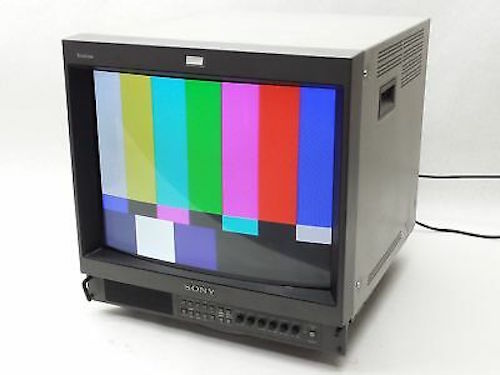
For monitors you will find that general consumer quality CRTs and LCDs will work quite well. Broadcast CRT monitors can offer finer tune analog control of the video attributes as well as pass thru signals which can be useful for working with long signal chains. Some LCD screens will offer the ability to upscale SD video inputs. It is also nice to have a variety of sizes available as there are flavors of feedback that are easier to get on larger screens that can be more difficult to get on tiny screens and verse vica.
2. Internal Feedback
This is achieved by sending a video signal in some sort of processing loop with no cameras involved. In order to have any effects something will need to be slightly changed in how the signal is reprocessed otherwise the image will freeze. Examples include plugging the output of a video mixer into an input and letting the TBC reconstruct the same signal with slight offsets or using syphon in OSX to bounce the same signal in and out of an application.
How do I get started with this?
First we will talk about internal feedback with SD video mixers. If you have a video mixer around just try plugging the output into the input and see what happens. Depending on the model of mixer you have there may be a dramatic burst of colors, black and white grey cloudy streaks, or maybe just like some faint pixel rain coming from a corner of a screen. There might not be anything that pops up immediately, if so you might want to try interrupting the signal somehow by for example running it through a broadcast CRT with a pass thru option or a VCR. You will find that even just passing a signal through these devices can have a dramatic effect on the internal feedback line. Other fun things you can try are to convert the signal back and forth a couple of times. For example if you have an composite to vga box and a vga to composite box, just pass the signal through these and then try to mess around with the settings menus on each of the converter boxes. They usually have some sort of hue saturation brightness and contrast attenuation controls so this can be a cheap and jury rigged solution to having a proc amp in your signal chain.
Individual models of video mixers can have very diverse kinds of internal feedback and even two of the same model can have different styles of movement depending on how the circuitry has aged. Someone told me that while testing out a roland edirol that when they used different power supplies with slightly different mA that the direction of the feedback trails changed. When using mixers with digital fx engines onboard, you will also notice different processing speeds when some fx are used as well. For example using the vertical flip option on the Videonics Mx1 will add a noticeable stuttering from frame dropping, as well as a bit of chunky pixelation. Delay and fx can often be your friend when working with internal feedback though, because the natural tendency of purely internal lines on mixers is to reach a steady (non-dynamic) state.
DSK (Downstream Key) is a very interesting feature to use in internal lines. DSK keys in little boxes on your video output based upon some brightness threshold. The effect this has in internal loops is very similar to visualizing a 1 dimensional cellular automata system unfold over time because the appearance of a DSK box in one frame can usually trigger another DSK box in another frame. Panasonic video mixers will often have this feature.

While it would be pretty lengthy to go into detail about all of the specific quirks of every brand and model of video mixers internal feedback styles (at least here, I may well do a later entry on exactly that subject), it would be remiss of me not to mention that the Panasonic WJ-AVE models have remarkably colorful and goopy internal feedback lines. These also have DSK options as well and are still fairly cheap on the used market so I would recommend one of these for someone interested in digging into some fun goopy internal feedback zones.

Internal feedback in the purely digital world is less explored and sort of a frontier at the moment! If you are working in a windows or OSX environment you can use a frame sharing system like syphon or spout to bounce video signals back and forth between programs. Some examples of this in operation can be found via Tekno Tarot. Hydra is a free browser based live coding video synthesis system which has a screen capture feature which can be used as an internal line. I am told that Resolume and Smode both have feedback options which do not require Spout or Syphon. TouchDesigner has simple and intuitive systems for designing internal feedback loops. Vsynth, a Max/Msp package has a lot of fun ways to get into various kinds of signal and video feedback! Video_Waaaves is a bit of free software written in openFrameworks and glsl (full disclosure i wrote it) which integrates a 2 channel video mixer with multiple taps of framebuffer delay and is as far as I can tell the only bit of software specifically designed around working with camera feedback and digital internal feedback.
